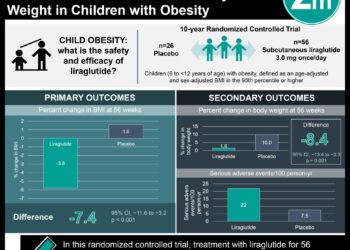WIC revisions associated with higher diet quality in children
1. Compared to nonparticipants, children whose families were using the Special Supplemental Nutrition Program for Women, Infants, and Children (WIC), had a significant increase in diet quality after a 2009 program revision.
2. Among WIC participants, there was an increase in Healthy Eating Index (HEI-2010) scores on 24-hour diet recalls after the program revision. However, not all HEI categories showed a statistically significant increase in score
Study Rundown: In 2009, the federal government revised the WIC program to better align with dietary recommendations from the Institute of Medicine. These changes included adding more vegetables, fruits, whole grains and low fat dairy, and decreasing juice allotment. This study included the first nationally representative sample in an analysis of diet quality after these significant revisions. The diets of children in WIC-participating families were compared to nonparticipating families before and after the WIC revision via 2, 24-hour diet recalls. Compared to nonparticipating families, children whose families received WIC after the revision had significantly higher HEI-2010 scores, indicating better diet quality. Most significantly, WIC participants had over a 3-fold increase in the “Greens and Beans” category of the Healthy Eating Index score (HEI-2010) compared to WIC nonparticipants. When compared to pre-revision WIC participants, post-revision children enjoyed improved diet quality. While this study is the first to explore the effects of federal changes on a national level, it is limited by lower statistical power due to the use of a single cohort wave after the changes were implemented and use of self-reported 24-hour dietary recalls.
Click to read the study published today in Pediatrics
Relevant Reading: Positive influence of the revised special supplemental nutrition program for women, infants, and children food packages on access to healthy foods
Study Author, Dr. June M. Tester, MD, MPH, talks to 2 Minute Medicine: University of California San Francisco, Benioff Children’s Hospital, Department of Endocrinology, Oakland, California.
“There are 4 million low-income children in the US who live in households that use WIC. Trainees in medicine who take care of these children and their families benefit from knowing about the WIC food package, learning how these benefits changed radically in 2009, and also by being informed about how children’s diet quality improved as a result of the policy change.”
In-Depth [cross-sectional study]: This study included children ages 2 to 4 years old (n = 1197) from low income households (at or below 185% of federal poverty level) participating in the National Health and Nutrition Examination Survey. Four total cycles of data were collected, 3 of which occurred in the time period before the WIC revision (2003-2008, 2011-2012). The WIC participant sample contained a greater proportion of Hispanic children (39.9% vs. 21.8%), and households with a lower income level (84% vs .106% of the federal poverty level). Diet quality was measured using the HEI-2010 scoring system, which included categories such as “whole fruit,” “greens and beans,” “whole grains,” and “fatty acids”. The mean HEI-2010 score among WIC participants was 52.4, compared to 50.0 in nonparticipants. Compared to nonparticipants, there was a statistically significant association between the WIC revisions and higher HEI-2010 scores in WIC participants (3.7 points, 95%CI: 0.6-6.9). Scores in the “greens and beans” category showed the greatest increase (111%) among WIC participants after the revision. Compared to nonparticipants, the change in this score category was 3.4 times greater among WIC participants (p = 0.02). Changes in other categories (whole grains, fatty acids) were not statistically significant, but did show greater increases among WIC participants.
Image: PD
©2015 2 Minute Medicine, Inc. All rights reserved. No works may be reproduced without expressed written consent from 2 Minute Medicine, Inc. Inquire about licensing here. No article should be construed as medical advice and is not intended as such by the authors or by 2 Minute Medicine, Inc.





![Endostatin directly binds androgen receptors to treat prostate cancer [PreClinical]](https://www.2minutemedicine.com/wp-content/uploads/2015/01/Endostatin-75x75.jpeg)

